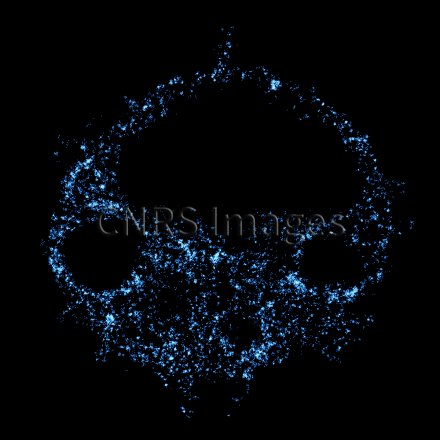Production year
2022

© Rémy CHAR / Roxane FABRE / CIML / CNRS Images
20220122_0013
Autophagy is a survival pathway specific to the cell: it enables the destruction of intracellular pathogens, as well as access to a nutrient reserve through the recycling of the cell membranes. If this process is not well-balanced, it can cause the cell to die. The image shows the RUFY3 protein, which is involved in the autophagy mechanism, in a mouse macrophage – an immune system cell responsible for the phagocytosis of foreign bodies. The presence of these molecules is shown in blue, according to their intensity, forming a skull-like pattern that reflects the internal struggle for survival taking place in each cell. This research aims to shed light on how this mechanism works, and makes it possible to observe how a cell can successfully withstand a hostile environment. This image was taken using direct stochastic optical reconstruction microscopy (dSTORM). It was awarded the People's Choice Award in the 2022 La preuve par l’image (LPPI) photography competition
The use of media visible on the CNRS Images Platform can be granted on request. Any reproduction or representation is forbidden without prior authorization from CNRS Images (except for resources under Creative Commons license).
No modification of an image may be made without the prior consent of CNRS Images.
No use of an image for advertising purposes or distribution to a third party may be made without the prior agreement of CNRS Images.
For more information, please consult our general conditions
2022
Our work is guided by the way scientists question the world around them and we translate their research into images to help people to understand the world better and to awaken their curiosity and wonderment.